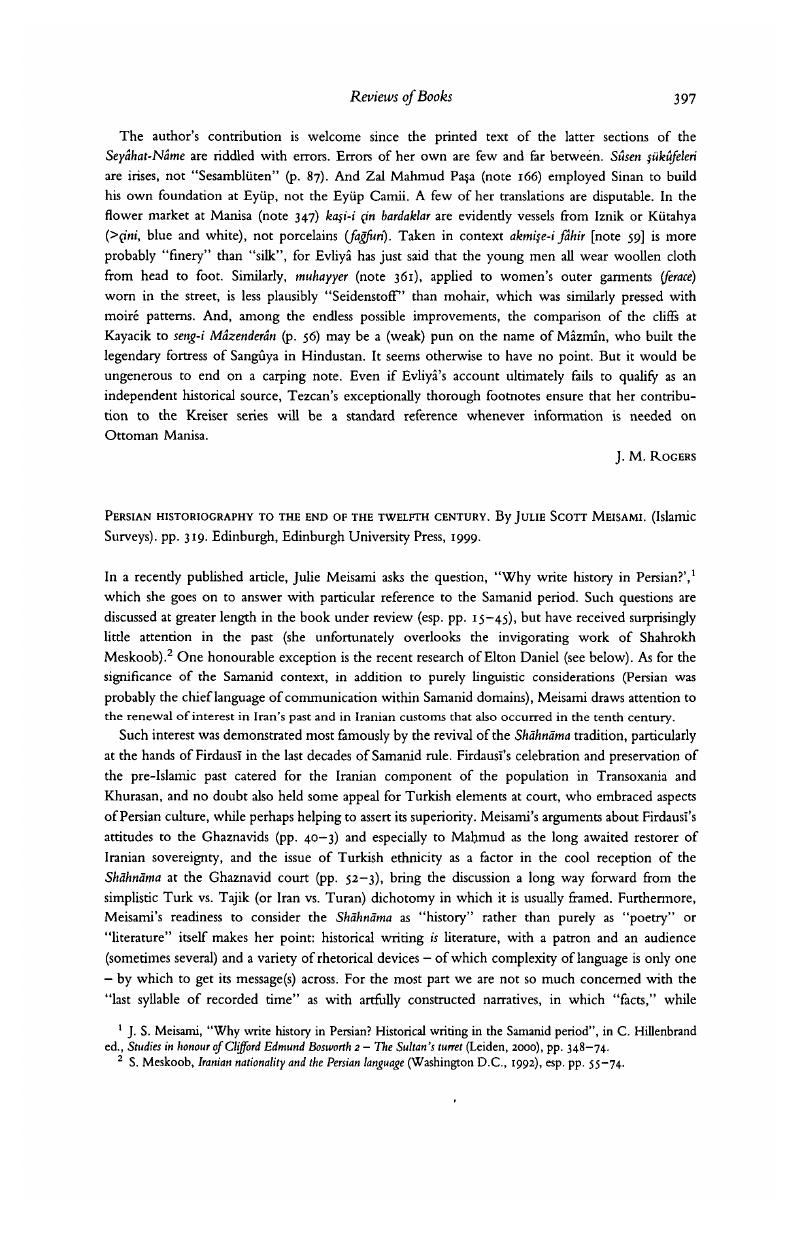No CrossRef data available.
Published online by Cambridge University Press: 24 September 2009

1 Meisami, J. S., “Why write history in Persian? Historical writing in the Samanid period”, in Hillenbrand, C. ed., Studies in honour of Clifford Edmund Bosworth 2 – The Sultan's turret (Leiden, 2000), pp. 348–74Google Scholar.
2 Meskoob, S., Iranian nationality and the Persian language (Washington D.C., 1992), esp. pp. 55–74Google Scholar.
3 Daniel, Elton, “Manuscripts and editions of Bal‘amī's Tarjamalt-yi tārīkh-i Ṭabarī”, JRAS (1990), pp. 282–321Google Scholar (esp. p. 286); cf. his unpublished paper, “The Samanid ‘translations’ of Tabari”, cited by Meisami.
4 Poliakova, E. A., “The development of a literary canon in medieval Persian chronicles: the triumph of etiquette”, Iranian Studies, 17/ii–iii (1984), pp. 237–56CrossRefGoogle Scholar.